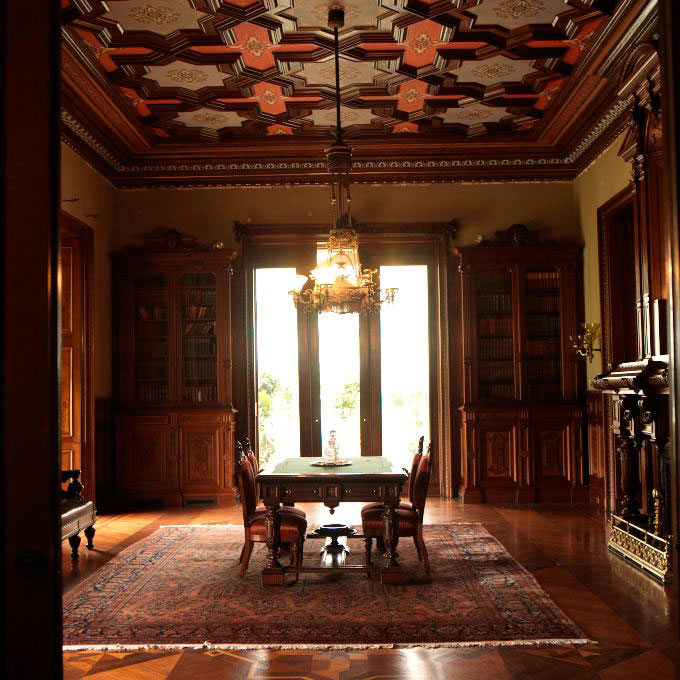Norwalk, CT: Lockwood-Mathews Mansion
See more photos So many people I know are always awestruck whenever they visit the mansions of Newport, Rhode Island. However, as a native of Quincy, Massachusetts, home of the stately Georgian Adams homestead, it’s always a bit of a shock when I move into the Gilded Age. Still, I continue on my quest to […]

Coffee By Design | Portland, Maine
Photo Credit : Katherine KeenanSo many people I know are always awestruck whenever they visit the mansions of Newport, Rhode Island. However, as a native of Quincy, Massachusetts, home of the stately Georgian Adams homestead, it’s always a bit of a shock when I move into the Gilded Age. Still, I continue on my quest to visit these elegant homes imbued with history (with emphasis on the story part) and lessons to impart.
When I moved to Connecticut in 1978, I found all that in Norwalk’s Lockwood-Mathews Mansion–America’s first true mansion, predating Newport by 20 years. If you don’t know the story of this 62-room Second Empire-style manse, set incongruously at the base of I-95’s exit 15 ramp, here’s the CliffsNotes version.
LeGrand Lockwood was Norwalk’s fair-haired boy. Starting as a clerk on Wall Street, he made a fortune in Civil War bonds, railroads, and stocks, then came back home. His dream house, Elm Park, took four years to build (1864-68) and cost $2 million (then!). He’d barely settled in with his wife and six children when “Black Friday” struck in 1869, and he lost everything. While attempting a comeback, he died suddenly of pneumonia in 1872. His widow struggled to keep up the payments, but his former ally and sometime rival in the railroad business, Cornelius Vanderbilt, foreclosed on the 30-plus-acre property. In 1876 it sold for $90,000.
Enter Charles Mathews, an importer, whose family lived in the mansion until 1938 and then sold it to the city. The city used it for offices and storage (imagine voting machines and lawnmowers where Albert Bierstadt’s Domes of the Yosemite once hung), then decided to tear it down. Only a heroic effort by concerned citizens in the 1950s saved it from the wrecking ball. Today the mansion struggles to fund restoration and buy back the furnishings sold at auction. Slowly, slowly, with locals continuing to rally round, it’s being restored to its former glory.
To me the mansion’s story is universal. We make money, we lose it, we start over; we’re forced to part with what we love; we’re betrayed by old friends, redeemed by new ones. And if we’re wise, we come to value our old houses before it’s too late.
For me this mansion has become a touchstone. I pass it on the way to and from work each day, so it symbolizes home. I cheer every restored room and eagerly anticipate the next. Most of all, I rejoice seeing it welcome the community inside. I’ve watched kids “day-camp” in the billiards room; I’ve heard concerts in the rotunda; I’ll be at the July antiques fair. And if I come across something with the Lockwood imprimatur? Why, of course I’ll donate it back. As I said, it’s become a mansion I can call my own.
When You Go
Lockwood-Mathews Mansion Museum
Mathews Park, 295 West Ave. 203- 838-9799; lockwoodmathewsmansion.com
Stepping Stones Museum for Children
Mathews Park, 303 West Ave. 203-899-0606; steppingstonesmuseum.org
Center for Contemporary Printmaking
Mathews Park, 299 West Ave. 203-899-7999; contemprints.org
Fairfield County Convention & Visitors Bureau
800-473-4868, 203-853-7770; visitfairfieldcountyct.com
Greater Norwalk Chamber of Commerce
203-866-2521; norwalkchamberofcommerce.com
More Travel: 10 New England Weekends








What a beautiful piece!